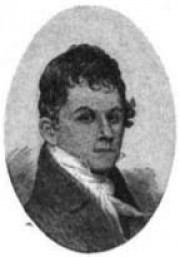Mining

Lead Mining Furnace, 1853
Dakota and Ojibwe people engaged in only limited mining of minerals. Sacred ceremonies required the quarrying of pipestone (later called Catlinite after artist and treaty signer George Catlin). But because of spiritual connections to the earth, minerals were mined sparingly.
The lure of fortunes to be made from lead, copper and gold in territories held by Dakota and Ojibwe people, however, induced mining interests from St. Paul, Missouri, Michigan, New York and elsewhere to engineer significant treaties that affected people and land in what is now Minnesota.
Multinational Treaty at Prairie du Chien, 1825: One immediate aim of the U.S. in calling for this “peace” treaty was to make mining safer for US citizens in the Fever River lead region, which stretched north to Prairie du Chien. In the three years following the treaty, 10,000 miners moved to the region. Too consumed by mining to build homes, they often lived in holes in the ground, and so were called “badgers” – giving Wisconsin its state nickname. Their disregard for the boundaries so carefully negotiated in the 1825 treaty ignited the Black Hawk War in 1832. Among the signers of this treaty were:
- Nicholas Boilvin, an Indian agent and friend of Julian Dubuque who had first brought the lead mines of Prairie du Chien to the attention of the US Indian Affairs bureaucracy.
- Henry Schoolcraft, who married into a powerful Ojibwe family (and later into a powerful US slaveholding family) and made a name for himself as a mineralogist, identifying copper and lead deposits.
Reuben B. Carlton became one of the founders of the city that became Duluth. He originally moved there to be a blacksmith for the Ojibwe, and signed an 1847 treaty. Hearing of the presence of copper in the Arrowhead region, he began surveying the area for potential mining sites. Carlton was among the mining speculators who pressured the U.S. to make land cession treaties with the Ojibwe, especially the 1855 treaty. A month before that treaty was signed, Carlton incorporated a company in Ohio for the purpose of obtaining mineral locations and lands in what is now the State of Minnesota, with business partners who were also involved in treaty making.
- J. W. Lynde, who signed the other 1847 Ojibwe treaty and the 1854 Ojibwe treaty. (See timber and transportation.)
- E. A. C. Hatch, who signed the treaty with the Mississippi band of Ojibwe in 1863. (See transportation.)
- Nathan Myrick, signer of a Ho-Chunk treaty in 1859 (and brother of H. J. Myrick who signed an 1858 Dakota treaty).
Treaty with the Bois Forte Band of Chippewa, 1866: This treaty was negotiated exclusively to open a supposed gold deposit to U.S. miners, in an atmosphere of tension caused by an armed band of miners who had entered the region. In the months before the treaty, speculators created a number of mining companies. “One of the most secure, both financially and politically,” according to historian David K. Walker, was the Minnesota Gold Mining Company; the president of the company was Henry Sibley (who had signed the Ojibwe land cession treaty of 1837), and the corporate secretary was Stephen Miller, the State’s governor.
Other notable mine owners who signed treaties with the Dakota and Ojibwe in what became Minnesota included:
- Henry Dodge, one of the wealthiest lead mine owners in Missouri and later Governor of Wisconsin Territory and a U.S. Senator. Dodge signed 11 US-Indian treaties, including the 1837 Ojibwe land cession treaty.
- Henry Gratiot, one of the first mine owners in the Fever River lead region, who signed treaties in Wisconsin with the Ho-Chunk and Ojibwe in 1828 and 1829.
- George Wallace Jones, a politician and lead mine owner in Wisconsin, who signed the 1837 Dakota land cession treaty and a treaty with the Oneida.
- Reuben Ottman, a lawyer and newspaper owner who settled in Oronoco in 1854, and formed in 1858 the Oronoco Mining Company to capitalize on a short-lived local gold rush. Ottman signed the 1863 “Old Crossing” treaty with the Ojibwe.
- George Davenport (see fur trade), one of the most prominent early mine operators in the Midwest, shipped the first boatload of lead ore down the Mississippi in 1816. He signed the multinational treaty at Prairie du Chien.










